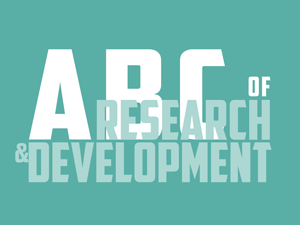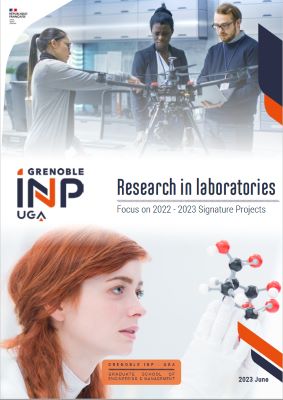Written by Violaine Bigot, Jana Darwiche and Isabelle Chéry
The consortium agreement is a cooperation agreement for collaborative research projects, i.e., projects involving public (e.g., Grenoble INP) and private (e.g., companies) partners, with no financial flow between parties, each partner being subsidised for the completion of the project (e.g., ANR). It is a private agreement signed between the partners to define mutual rights and obligations.
The elements outlined in this article are standard clauses in consortium agreements. The parties may decide to include different obligations to suit each project's context and challenges.
The content of the consortium agreement
The consortium agreement is above all a project management tool. It seeks to organise the relations between the partners and to share the gains of the collaboration.
Prior to the project, it enables an inventory to be made of each partner’s knowledge (FAQ: what is the previous, parallel and own knowledge?). Thus, each stakeholder makes an inventory of their knowledge (know-how, patents, software) held before entering the project and necessary for its implementation. This inventory makes it possible to prove the anteriority and ownership of the knowledge listed in the consortium agreement, even if it is not protected by an intellectual property title. For example, secret know-how (K for Know-How), which cannot be protected, can be listed and briefly described in the consortium agreement. That way, its anteriority and its belonging to one of the partners are recorded.
During the project, the consortium agreement determines partners’ reciprocal rights and obligations. In particular, it sets out the rules of governance, by appointing a coordinator (one of the partners) responsible for ensuring the proper implementation of the project. The agreement also provides for a management body (often a committee) appointed to promote the proper implementation of the project. Furthermore, the agreement provides for the rules governing access, use, exploitation and ownership of results generated by partners during the project as well as the conditions for access, use and exploitation of partners’ own knowledge.
After the project, the agreement formalises the obligations that continue beyond the project, for example the confidentiality obligation on the information exchanged. Indeed, this information must remain confidential after the project for an average of 5 years [1].
The agreement also sets out the guidelines for the intellectual property rights of the project results:
- Partners agree on the rules for the distribution of results ownership: in equal shares or in proportion to each partner’s contribution. If partners choose the first option, they will share research results equally, regardless of their involvement in the result. Conversely, the second option offers the possibility of having a share of ownership that corresponds to the partner’s involvement [2].
- The matter of compensation in the event of exploitation of the project results is also settled. As public institutions are not entitled to exploit results directly because of their status, provision must be made for a financial return if one of the partners does exploit the results.
- The agreement also sets out the rules for managing intellectual property rights in terms of protection costs[3], defence of new patents and assignment of shares.
Finally, the consortium agreement sets out the conditions for publication. Publication must be well articulated with the intellectual property and secrecy policy in order to make publication and protection complementary. The agreement therefore provides a framework for publications to protect partners’ interests by ensuring that commercially sensitive information remains secret or is not disclosed/published while a patent is filed. But the consortium also ensures preserving the interests of the researchers, as publishing is essential to them. Therefore, the consortium must give researchers the opportunity to publish quickly by giving partners the right to review and amend the publication. Beware, these obligations may last beyond the project.
What should be checked before signing the agreement?
As a general rule, following funding notification, the funding organisations require that the consortium agreement be signed before starting the project or within a constrained timeframe. For example, 12 months following notification for the ANR; 6 months for BPI.
Be careful, if the project includes prior knowledge that is the subject of other parallel funding, such as a SATT project, it is recommended that the lawyer in charge of negotiating the consortium agreements be informed before the project is submitted. This will enable him/her to anticipate the negotiation of intellectual property and exploitation clauses with the partners. A first draft of the agreement can be submitted with the project application. For these sensitive projects, a confidentiality agreement may also be signed pending completion of the consortium agreement.
The main questions to be asked before signing the consortium agreement concern:
- The adequacy of the partners’ roles within the project, each partner’s competences and the laboratory’s internal resources;
- The general rules regarding voting rights and governance, in particular the appointment of the coordinator;
- Budget consistency with the tasks to be carried out and the dates scheduled;
- Description of prior knowledge;
- The sharing of intellectual property in relation to the results generated within the project.
Do you have any questions? Please feel free to contact Violaine Bigot, legal officer at DRIVE violaine.bigot@grenoble-inp.fr in charge of consortium agreements :
You can also find all the definitions in our Research & Development Primer.
__________________________________
1] Contractual duration, but the parties may decide to shorten or extend this duration
2] Often depending on intellectual, material, financial and human contributions
3] This refers to the assumption or sharing of IP costs




